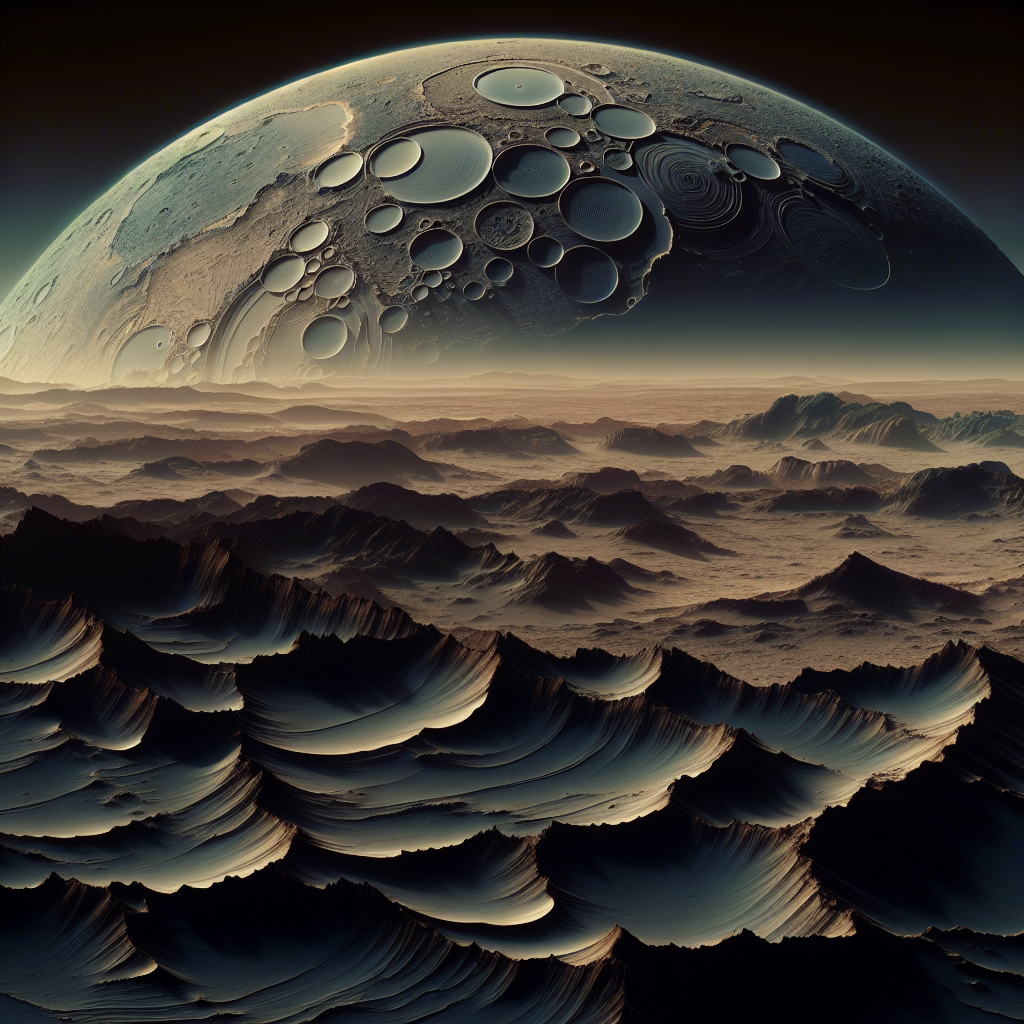Exploring the Martian Surface: Unveiling Plates and Polygons on Sols 4362-4363
-
Table of Contents
- Exploring the Martian Surface: Unveiling Plates and Polygons on Sols 4362-4363
- The Martian Surface: A Mosaic of Plates and Polygons
- Unveiling the Geological Processes
- 1. Tectonic Activity
- 2. Thermal Contraction
- Implications for Life on Mars
- 1. Habitability
- 2. Preservation of Organic Matter
- Summary
- RSS Feeds
Exploring the Martian Surface: Unveiling Plates and Polygons on Sols 4362-4363
As humanity continues to push the boundaries of space exploration, our fascination with the Red Planet, Mars, grows stronger. The Martian surface, with its unique geological features, has always been a subject of great interest for scientists and researchers. In this article, we will delve into the recent findings from Sols 4362-4363, where the exploration of Martian plates and polygons has provided valuable insights into the planet’s history and potential for sustaining life.
The Martian Surface: A Mosaic of Plates and Polygons
Mars, often referred to as the “Red Desert,” is a planet with a diverse landscape. The surface is adorned with a mosaic of plates and polygons, which have puzzled scientists for decades. These formations, resembling cracked mud or shattered glass, are believed to be the result of various geological processes.
On Sols 4362-4363, the Curiosity rover captured high-resolution images of these plates and polygons, providing scientists with a closer look at their intricate patterns and formations. The images revealed a wide range of sizes and shapes, from small, intricate polygons to large, complex plate structures.
Unveiling the Geological Processes
Studying the plates and polygons on Mars can help us understand the geological processes that have shaped the planet’s surface. By analyzing the patterns and formations, scientists can gain insights into the history of Mars and its potential for supporting life.
1. Tectonic Activity
One of the leading theories behind the formation of Martian plates and polygons is tectonic activity. Just like Earth, Mars is believed to have experienced tectonic movements in its past. These movements could have caused the crust to crack and form the intricate patterns we observe today.
Case Study: By comparing the patterns on Mars with those on Earth, scientists have found striking similarities. The presence of fault lines and fractures on both planets suggests that tectonic activity played a significant role in shaping the Martian surface.
2. Thermal Contraction
Another possible explanation for the formation of Martian plates and polygons is thermal contraction. Mars experiences extreme temperature variations, with surface temperatures ranging from -195 degrees Fahrenheit (-125 degrees Celsius) to 70 degrees Fahrenheit (20 degrees Celsius). These temperature fluctuations could cause the surface to expand and contract, leading to the formation of cracks and fractures.
Statistics: Recent data from the Mars Climate Sounder instrument on the Mars Reconnaissance Orbiter has shown that the planet’s surface temperature can vary by up to 100 degrees Fahrenheit (55 degrees Celsius) between day and night.
Implications for Life on Mars
The exploration of Martian plates and polygons not only provides insights into the planet’s geological history but also has implications for the potential existence of life on Mars.
1. Habitability
The presence of plates and polygons suggests that Mars may have had a more hospitable environment in the past. The cracks and fractures could have allowed for the circulation of water and the formation of habitats suitable for microbial life.
Example: On Earth, similar patterns have been found in regions with hydrothermal activity, where life thrives in extreme conditions. The presence of plates and polygons on Mars raises the possibility of similar environments existing on the Red Planet.
2. Preservation of Organic Matter
The intricate patterns of plates and polygons could have played a crucial role in preserving organic matter on Mars. The cracks and fractures may have acted as natural traps, protecting organic compounds from degradation by radiation and other harsh environmental conditions.
Case Study: The discovery of organic molecules on Mars by the Curiosity rover in 2018 supports the idea that the planet may have preserved organic matter. The presence of plates and polygons further strengthens this hypothesis.
Summary
The exploration of Martian plates and polygons on Sols 4362-4363 has provided valuable insights into the geological processes that have shaped the Red Planet’s surface. The presence of these formations suggests tectonic activity and thermal contraction as possible explanations. Furthermore, the study of plates and polygons has implications for the potential habitability of Mars and the preservation of organic matter. As we continue to unravel the mysteries of Mars, these findings bring us closer to understanding the planet’s history and its potential for sustaining life.


